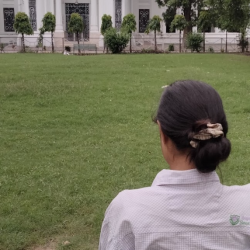

Touch is one of the five senses. Its function is to perceive sensations of contact, pressure and temperature and to send them to the brain. It is located in the skin, the organ that covers the entire outside of the body for protection. The cellular renewal of the skin is continuous, and when recording external changes, it activates reflexive mechanisms to open or close the pores and, thus, to maintain the required body temperature. Secretions, such as sweat, also contribute to this process by reducing heat. Like the sebaceous glands, they are important for hydration and hygiene in the areas where they are located. A man's skin is tougher and greasier than that of women's because of greater quantity of sebum or oil secretion on man's skin than women's.
THE THINNEST AND THE THICKEST
The thinnest skin on the body is that of the eyelids. The thickest is that of the sole of the foot. Both provide, like all the skin of the body, a protective function for muscles, bones, nerves, blood vessels and interior organs. It is thought that hair and fingernails are modified types of skin. Hair grows over the whole body, except for the palms of the hands, the soles of the feet, the eyelids and the lips.
Responding to Temperature
When the skin perceives the sensation of cold, the blood vessels and the muscles contract. The purpose of this is to prevent the escape of heat; as a consequence, the hairs stand on end, resulting in what is commonly called goose bumps. The opposite happens in response to heat: the blood vessels dilate because the skin has received instructions from the brain to dissipate heat, and the vessels emit heat as if they were radiators. Then, there is secretion of sweat. The evaporation of sweat removes heat from the skin.
Nails
They are hard and hornlike. Their principal component is keratin, a protein that is also present in the skin and the hair. Their function is to cover and protect the ends of the fingers and toes. Once outside the body, they die. That's why there is no pain when you cut them.










